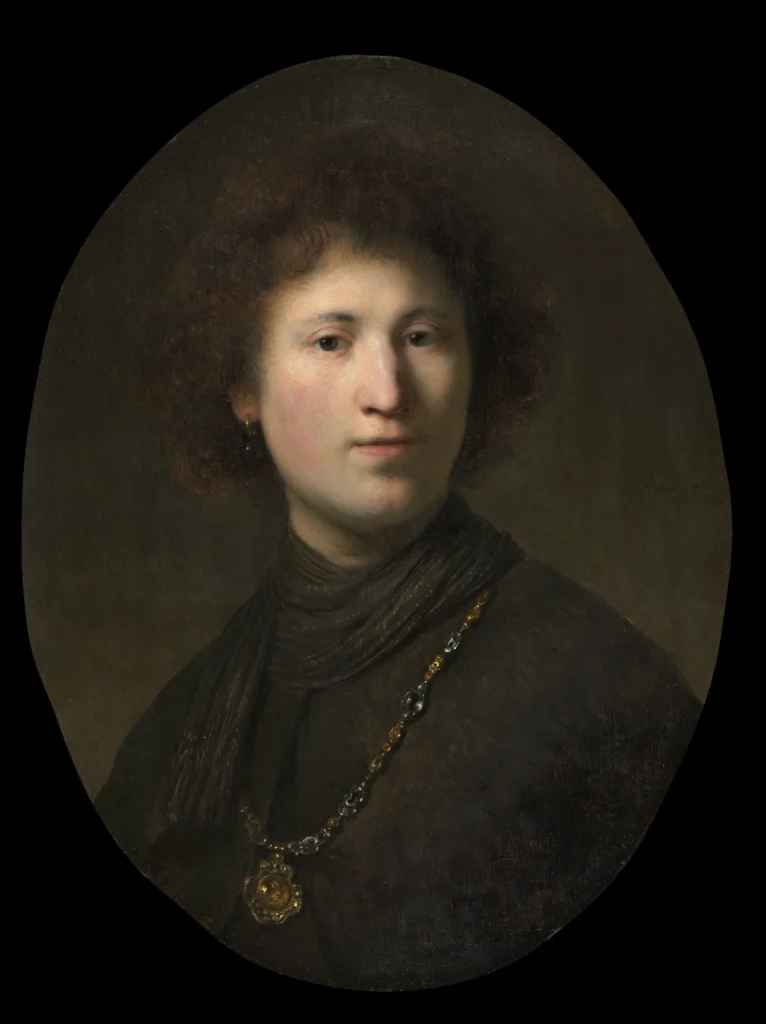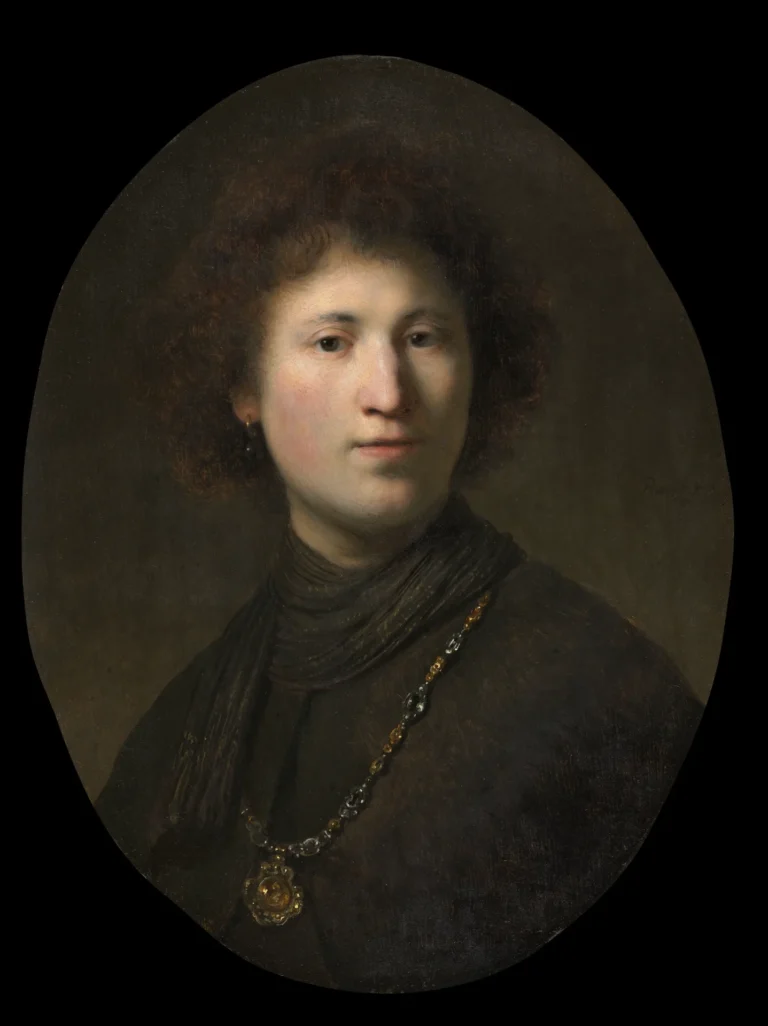A Young Man with a chain (1629-1632)
A Young Man with a Chain is a captivating tronie painted around 1629 or 1632, attributed to either Rembrandt van Rijn or one of his pupils. The piece depicts a young man adorned with a striped scarf and extravagant pendant, showcasing the artist's talent in rendering detailed facial expressions. The contrast of light and shade expertly illuminates the subject's features, embodying the early 17th-century fascination with costume and character studies. This painting not only reflects the stylistic innovations of Rembrandt's early career but also serves as a testament to the rich tradition of Dutch portraiture.
1629 - 1632
About the Artwork
Did You Know
Liked what you see? Add it to your collection.
Enjoyed reading? Share it.
... continued
Date and Attribution
The painting is dated to around 1629 or 1632, although the exact authorship is not certain. It bears Rembrandt's monogram, but some scholars attribute it to Isaac de Joudreville, a pupil and associate of Rembrandt.
Type of Artwork
This painting is an example of a tronie, a Dutch term meaning "head" or "facial expression." Tronies were not intended to be identifiable portraits but rather artistic investigations of facial appearance and fanciful costume.
Description
The painting features a young man with a striped scarf and a glittering pendant on a jeweled chain, adding an exotic touch. The strong contrast of light and shade shapes the contours of the young man’s face, a characteristic technique of Rembrandt's work during this period.
Medium and Dimensions
The painting is executed in oil on wood, with dimensions of 57.8 x 43.8 cm (22 3/4 x 17 1/4 in.) unframed, and 83.8 x 69.9 x 12.7 cm (33 x 27 1/2 x 5 in.) framed.
Current Location
The painting is part of the collection at the Cleveland Museum of Art, bequeathed by John L. Severance in 1942.
Style and Influence
The use of chiaroscuro and the focus on facial expression and costume are typical of Rembrandt's style during the early 1630s, reflecting his interest in exploring different lighting effects and character studies.










